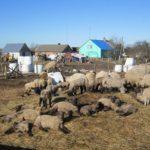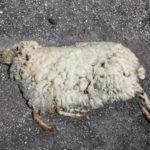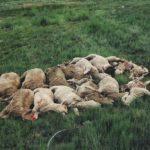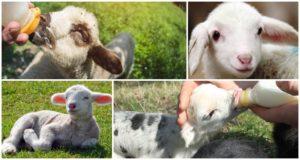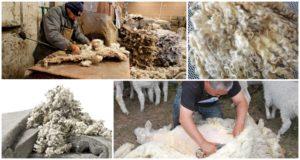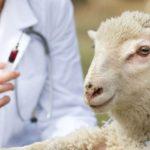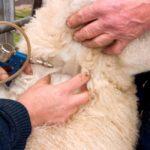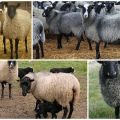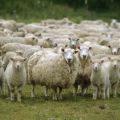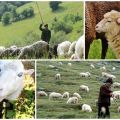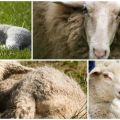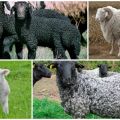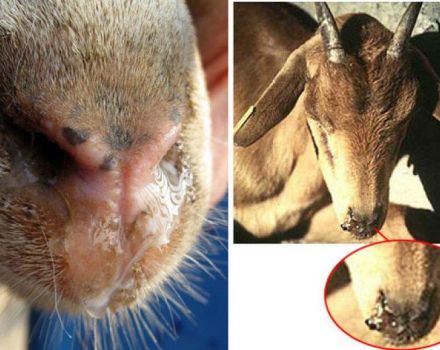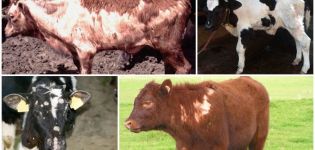The causative agent of bradzot in sheep and signs of the disease, treatment and prevention
Disease of sheep with bradzot can occur during pasture and stall keeping, at any time of the year. The disease is infectious, affects goats, sheep, progresses rapidly and ends with the death of the animal. It is distributed throughout the world and causes significant damage to large farms and private farms. Requires the adoption of emergency measures and the introduction of quarantine.
Infection discovery history
Translated from Norwegian "bradzot" means "sudden illness". The name fully reflects the speed of the course and spread of the disease, first described by Krabbe in 1875. A detailed study of the infection was carried out by the Norwegian doctor Ivar Nilsson in 1888. In the Soviet Union, bradzot was identified and described in 1929 by K.P. Andreev. An outbreak of the disease affects about 20% of the population; in the acute course of the infection, the mortality rate is 100%.
Causative agent of the disease
The causative agents of bradzot are the anaerobic bacteria Clostridum septicum, Clostridum oedematiens. These are gram-positive movable sticks. They are resistant to boiling, exposure to chemicals (40-60 minutes), they are stored for years in the soil, silt of water bodies. Bradzot is characterized by hemorrhagic lesions of the abomasum and duodenum of sheep.
Fat individuals with low mobility, regardless of gender, sheep and rams under the age of 2 years or young animals of 3-8 months, fall ill more often. The infection enters the sheep's body:
- with soil in the pasture;
- when drinking from contaminated water bodies;
- with feces in case of poor quality animal care;
- from sick animals and infected non-utilized carcasses of sheep.
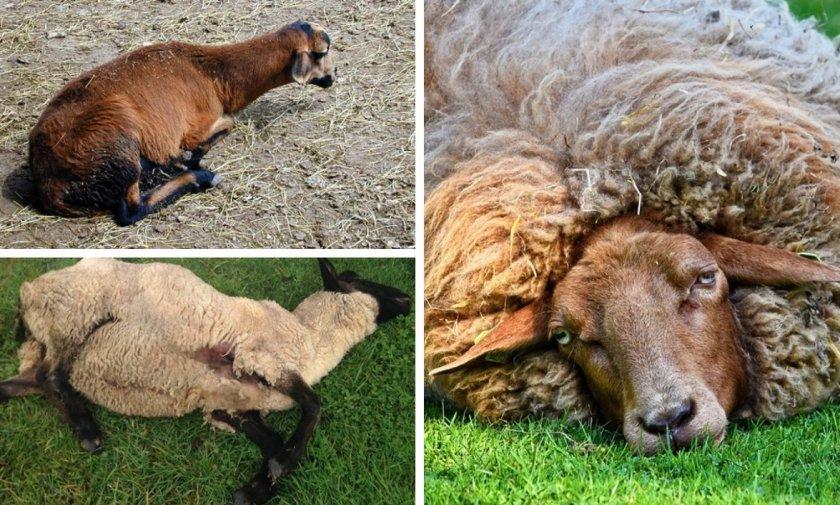
The provoking factors are: hypothermia or overheating of the livestock, a sharp change in diet, the uncontrolled use of antibiotics when raising animals.
Do not graze animals on the grass covered with frost, do not offer sheep frozen dirty vegetables. Animals should be watered from clean flowing reservoirs. The disease appears at any time of the year, more often in autumn and spring. Summer outbreaks are triggered by drought. The epidemic can only affect young animals or manifest in adult animals.
Pathogenesis and symptoms
Clostridia are always present in the digestive tract of animals. Infected grass or water, taking antibiotics by sheep, hypothermia or overheating provoke a rapid increase in the number of bacteria and the release of toxins that corrode the walls of the abomasum, poison the body of the sheep.
Bradzot is developing rapidly. Arriving in the sheepfold in the morning, the owner can find dead animals that yesterday were well-fed and healthy. A sheep can fall and die within 30-40 minutes.
Signs of the disease:
- Sharp redness of the eyes.
- Bloody foam at the mouth, bloody discharge from the nose.
- Bloody diarrhea.
- Animals are depressed, lack of appetite.
- Sometimes there are swelling of the dewlap, neck and submandibular region.
- Gum is lost.
- The gait becomes spasmodic.
- Urination becomes more frequent.
Animals can fall on the way to pasture. The sheep has convulsions and dies within half an hour. Bradzot of moderate severity is characterized by an increase in temperature (40.7-41 ° C), frequent shallow breathing, and increased heart rate. Foam begins to flow from the mouth, the stomach swells.

Diagnostic methods
Signs of the disease in animals may be poorly expressed; if bradzot is suspected, an anatomical study of the fallen livestock must be performed.
Sheep carcasses decompose quickly, sometimes the belly swells up to rupture of the skin. A liquid is released with an admixture of blood from the nose, mouth, animal. The chest and abdominal regions are filled with a yellowish fluid. The trachea is filled with bloody mucus, edema and blood are present in the lungs. A characteristic sign of the disease is the presence of hemorrhages in the diaphragm, pleura and peritoneum. Animal corpses are disposed of completely; meat, wool or skins cannot be used. For diagnosis, abomasum and liver tissue are taken.
Additionally, studies are being carried out for the presence of other infections with similar symptoms: anthrax, infectious enterotoxemia, piroplasmosis. Eliminates aconite poisoning.
How to properly treat bradzot in sheep
With the rapid flow of bradzot, they do not have time to carry out treatment. From the moment the first signs of the disease appear until the death of the animal, it takes 2-6 hours. For moderate illness, cephalosporins, drugs for normalizing cardiac activity, anti-toxic and sedative agents are used.
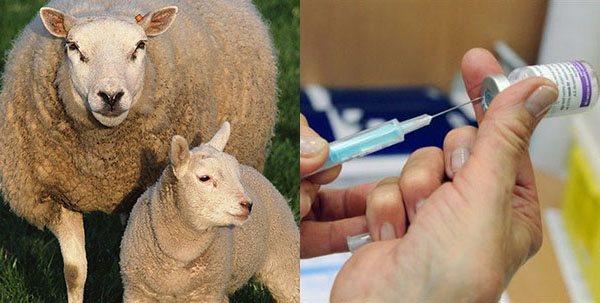
A sick sheep is isolated from the rest of the livestock, placed in a separate warm pen. She needs good food and access to clean drinking water.
Important: the treatment is carried out by specialists of the veterinary service. The animals are transferred to a stall, the sheepfold is disinfected.
Prevention measures
All pastures and water bodies, on which outbreaks of the disease were noted, are taken into account. To prevent the disease, the entire livestock is vaccinated. The vaccine was developed in the USSR, it eliminates the disease of the herd with bradzot, dysentery, infectious enterotoxemia, and malignant edema of sheep.
Animals are vaccinated from 3 months of age. Two-stage vaccination: the first dose is injected intramuscularly at the rate of 2 milliliters of vaccine per adult sheep, 1 milliliter for lambs up to 6 months. Re-vaccination is carried out in 20-25 days, 3 milliliters are injected for an adult livestock and 1.5 milliliters for lambs. They are vaccinated 1-1.5 months before the flock is removed to the pasture.
Emaciated and sick animals are not vaccinated. During the vaccination period, sheep are not sheared or castrated. Succulent ewes are vaccinated at least 1.5 months before lambing. The vaccine is completely used up after opening the bottle.
The livestock is vaccinated by veterinarians with secondary or higher veterinary education. Sterile syringes are used, the injection site is preliminarily wiped with alcohol. In case of an epidemic, the entire livestock is revaccinated. After vaccination, the temperature of the animals may rise, the sheep may limp for 3-5 days on the leg into which the drug was injected.
What restrictions are introduced during quarantine
When a farm is closed for quarantine, it is prohibited to sell, export animals from a disadvantaged area and move them inside the farm.Do not use milk for food, do not slaughter animals, do not cut wool.
Sheep are transferred to stall keeping. Healthy animals are vaccinated again. The corpses of sick animals, manure, bedding are burned. The sheepfold is treated with 3% bleach solution or 5% hot sodium hydroxide solution or 5% formalin solution. Mandatory 2-fold treatment with an interval of 1-1.5 hours and subsequent airing of the sheepfold. The quarantine is lifted if, since the last case of the disease, bradzot in animals has not been recorded within 20 days.
With proper care and maintenance of sheep, careful selection of pastures and reservoirs, outbreaks of a dangerous disease can be avoided. Vaccinations and conscientious work of veterinarians help to keep the livestock without loss. Compliance with quarantine measures when a disease occurs allows you to avoid the spread of bradzot.
